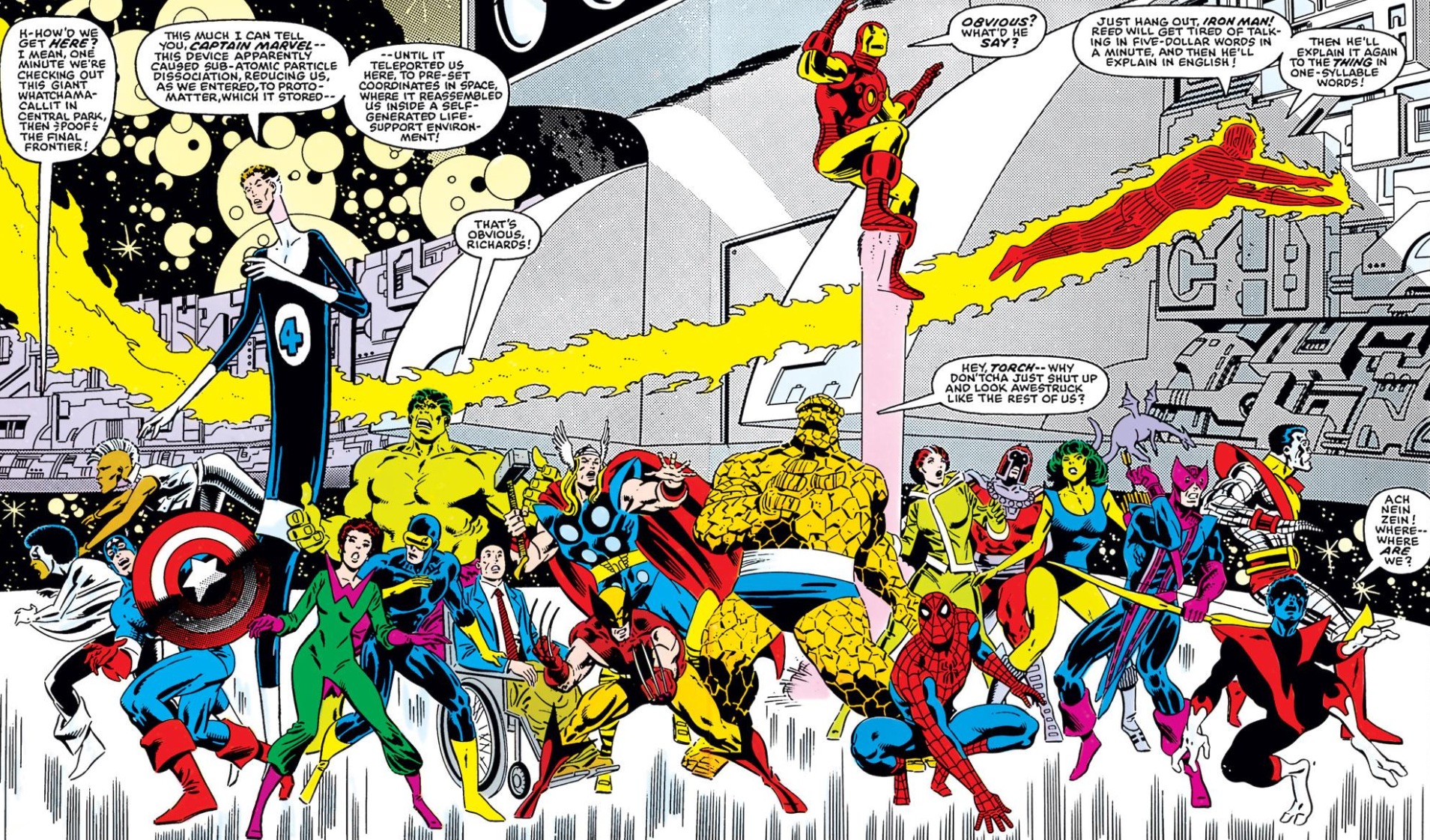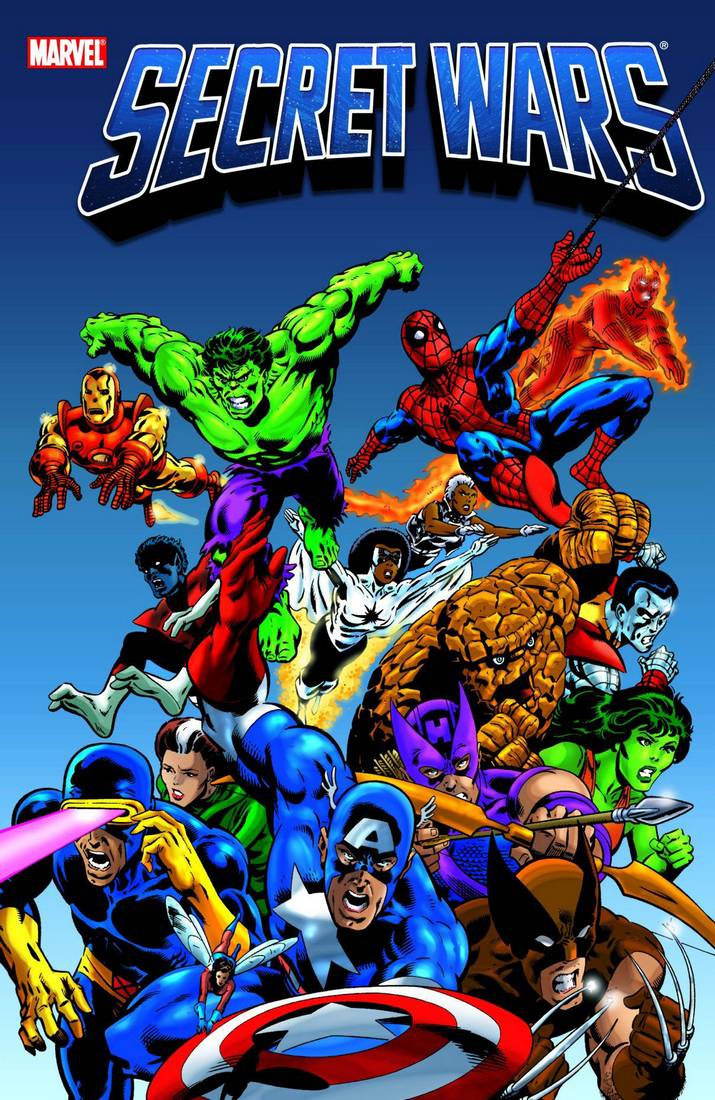I’d been meaning to read “Secret Wars” since elementary school, but I never made it a priority to pick up either the original issues or a trade paperback collection that came out in the early 1990s. I had issue #3 (of 12) and, while it seemed interesting, it didn’t blow me away.
Fast forward nearly twenty years and I had the opportunity to buy the Marvel Omnibus collection of it for a relatively low price. It seemed like a good opportunity to finally read the series and, if I didn’t like it, an opportunity to simply resell it on eBay.
In the story, a super-powerful alien being known only as ‘The Beyonder’ collects up many of the stars of the Marvel universe and pits them against one another on an alien planet called ‘Battleworld’ that has been created from small pieces of many other planets. The series was largely put together as an opportunity for Marvel to cash in on a toy deal with Kenner after their rival, DC Comics, had made a killing for years selling figures of their then-better-known heroes such as Superman and Batman.
Note: If you’ve not read this series and plan to read it at some point, consider the following to be ‘spoiler-filled’ commentary.
While the series purports to feature a massive number of Marvel comics characters, a few emerge with the most ‘screen time.’ In particular, Dr. Doom really comes to the forefront. Playing a slight second fiddle are a couple of his henchmen, such as the supremely-powerful, but very unstable Molecule Man. Well, mentally unstable – there is a pun waiting to happen somewhere in there.
There are few notable ‘good guy’ moments, other than the Hulk playing hero a few times while also having mental issues of his own. Also, there is an odd attempt to create a three-way rivalry between the ‘bad guys,’ the Avengers, and the X-Men. I am not entirely sure if that was simply a characteristic of the era, but the Avengers seemed to treat the X-Men like second-class super-citizens. That could be an interesting dynamic, but it is never believably executed.
Also, we see characters acting strangely out-of-character at times. In particular, this series marked the beginning of a break between the X-Man Colossus and his long-time love interest Kitty Pryde. Colossus arrives on Battleworld lovesick for Kitty. Yet, after experiencing the healing powers of a girl whose village was also kidnapped to Battleworld, he’s suddenly lusting for this new girl. While the plot hints that the attraction might be a side effect of the villager’s healing powers, her effect doesn’t even even wear off after her death. After “Secret Wars,” Colossus and Kitty would end up breaking up due to Colossus’s love confusion and, to some extent, both characters faded a bit into the background of the X-Men mythos for a while.
Given that this edition was a Marvel Omnibus, it contained a number of superfulous issues beyond the actual 12-issue maxi-series. Of note was an attempt 20 years later by “She-Hulk” writer Don Slott to address a gaping hold in “Secret Wars.” Slott explains the heretofore unknown background of Titania, a major player in the “Secret Wars” story who is seemingly ‘created’ by the efforts of Dr. Doom. Only near the end of the series do we learn that she came from a chunk of a suburb of Denver that had been collected by the Beyonder. This retro-origin story has significantly more emotion to it than the entire “Secret Wars” series.
Please note that it is not a good thing when a follow-up story to fill in plot holes 20 years later is more interesting than the main series itself.
While “Secret Wars” had a sequel a couple of years later in 1985 – entitled “Secret Wars II” – I won’t be seeking out that cross-over’s much larger Marvel Omnibus.
- Recapping Criterion’s Lone Wolf & Cub Films - December 29, 2024
- Moonlighting (1985) – A Series Review - September 12, 2024
- San Diego Comic-Con 2024 Analysis - July 31, 2024

